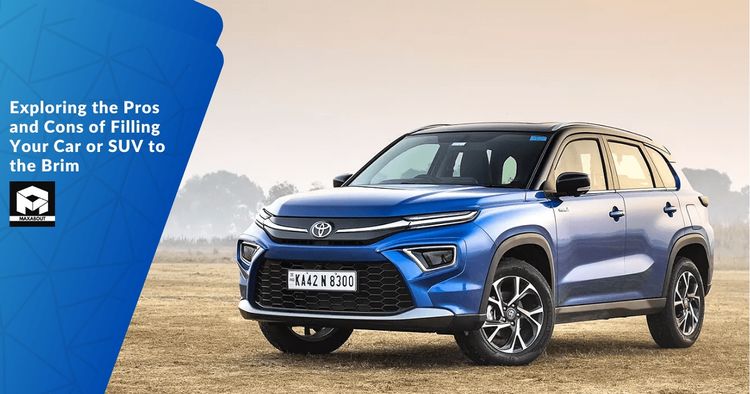Abhishek Goswami from Mumbai has a crucial question about fueling habits. Is it safe to fill your vehicle's tank to the brim? Let's explore the safety guidelines that go beyond the auto cutoff
The Safety Caution:
Abhishek's concern resonates with many vehicle owners, and the consensus is clear – filling your car or SUV's tank to the brim isn't a safe practice. The recommended approach is to exercise caution and stop filling either when the nozzle cuts off automatically or when there's noticeable blowback pressure resisting the fuel flow.
Preserving the Air Pocket:
The significance of stopping at the right moment goes beyond mere convenience. It's a fundamental aspect of preserving the crucial air pocket inside your vehicle's fuel tank. This empty space serves a critical role, allowing for the necessary expansion of fuel, thereby preventing potential spillage that could escalate into a serious fire risk.
Beyond Fire Hazards: Paint Protection:
Imagine fuel spillage as more than just a safety hazard – it's a threat to your vehicle's aesthetics. Leaving spilled fuel unattended can lead to damage, especially around the fuel filler area, with potential consequences like severe rusting. Interestingly, most vehicle manufacturers won't cover paint damage caused by alcohol-based liquids under warranty, underscoring the importance of responsible fueling practices.
Fueling Wisely:
The key takeaway is simple yet profound – resist the urge to top off your tank. Prioritizing safety by stopping at the right moment isn't just about avoiding potential hazards; it's about ensuring the longevity and health of your vehicle. Responsible fueling practices contribute to a safer and healthier ride for you and your car.
Additional Tips for Safe Fueling:
- Choose the Right Nozzle: Ensure you're using the correct fuel nozzle for your vehicle to prevent spillage and optimize fuel flow.
- Mind the Weather: In extreme temperatures, fuel can expand or contract. Consider this factor when filling your tank to avoid overfilling.
- Inspect the Fuel Cap: A damaged or loose fuel cap can contribute to fuel evaporation. Make sure it's in good condition and properly sealed.
Pros of Filling Your Tank to the Brim
1. Extended Range for the Road Trip Enthusiast
For the adventurers among us, a full tank means extended road-trip bliss. We'll discuss how a topped-off tank allows you to hit the open road with fewer stops, making those scenic drives and cross-country journeys more seamless and enjoyable.
2. Strategic Fuel Price Timing: Playing the Market
Timing is everything, even at the pump. We'll explore how filling up when fuel prices are lower can save you a few bucks in the long run. It's a subtle game of market dynamics that savvy drivers might want to consider.
3. Emergency Preparedness: A Full Tank for the Unexpected
Life is unpredictable, and so are road conditions. We'll discuss the peace of mind that comes with having a full tank in case of emergencies, whether it's unexpected traffic, detours, or unforeseen circumstances that require a detour to the nearest gas station.
Cons of Filling Your Tank to the Brim
1. Extra Weight: The Fuel Efficiency Conundrum
Every ounce counts when it comes to fuel efficiency. We'll delve into how carrying excess fuel weight can impact your vehicle's efficiency, especially for smaller cars or SUVs. It's a balance between convenience and conserving fuel.
2. Fuel Price Fluctuations: The Risk of Timing
Fuel prices are like a roller coaster – up one day, down the next. We'll discuss the flip side of strategic timing, exploring how filling up when prices are high might leave you with a sense of regret as you pass by a station offering a better deal.
3. Fuel Evaporation: Losing Gas to the Ether
Believe it or not, gasoline can evaporate. We'll uncover how topping off your tank might lead to fuel vapors escaping into the atmosphere, not only impacting the environment but also causing you to pay for fuel that never contributes to your mileage.
Parting Words of Advice:
As you stand at the pump, remember that those few extra drops aren't worth compromising the safety and well-being of you and your vehicle. By following these guidelines and additional tips, you're not just fueling up; you're ensuring a safer and more enjoyable journey ahead.

